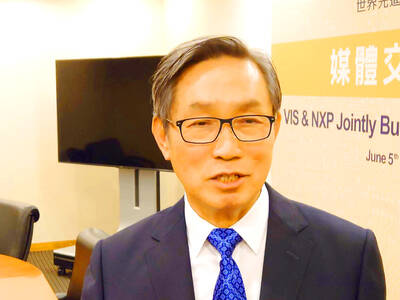The decline of the nation’s competitiveness ranking in the latest International Institute for Management Development (IMD) report shows the government needs to conduct a review to make improvements, Premier Jiang Yi-huah (江宜樺) said yesterday.
Jiang told a Cabinet meeting that there was no need to panic over the nation’s competitiveness because of the report, but Cabinet members have to take it as a “warning” and actively address the problems it has highlighted.
The IMD lowered Taiwan’s global competitiveness ranking for this year by four notches to 11th, the nation’s worst performance since 2009, with across-the-board declines in all four subindices — economic performance, government efficiency, business efficiency and infrastructure.
The IMD Competitiveness Index comprises four subindices, which are divided into 20 pillars made up of 323 variables.
Jiang demanded that Cabinet agencies review each variable with humility.
A set of economic stimulus measures that began last year went in the right direction, but the question was whether the government can fully implement the measures, he said.
At a press conference following the Cabinet meeting, Council for Economic Planning and Development Minister Kuan Chung-ming (管中閔) said that the report showed Taiwan’s global competitiveness ranking has declined, but that it did not mean Taiwan had become less competitive, rather that other countries had made more progress, Kuan said.
“Despite that, Taiwan’s competitiveness is still strong,” he said.

TARIFFS: The global ‘panic atmosphere remains strong,’ and foreign investors have continued to sell their holdings since the start of the year, the Ministry of Finance said The government yesterday authorized the activation of its NT$500 billion (US$15.15 billion) National Stabilization Fund (NSF) to prop up the local stock market after two days of sharp falls in reaction to US President Donald Trump’s new import tariffs. The Ministry of Finance said in a statement after the market close that the steering committee of the fund had been given the go-ahead to intervene in the market to bolster Taiwanese shares in a time of crisis. The fund has been authorized to use its assets “to carry out market stabilization tasks as appropriate to maintain the stability of Taiwan’s

STEEP DECLINE: Yesterday’s drop was the third-steepest in its history, the steepest being Monday’s drop in the wake of the tariff announcement on Wednesday last week Taiwanese stocks continued their heavy sell-off yesterday, as concerns over US tariffs and unwinding of leveraged bets weighed on the market. The benchmark TAIEX plunged 1,068.19 points, or 5.79 percent, to 17,391.76, notching the biggest drop among Asian peers as it hit a 15-month low. The decline came even after the government on late Tuesday authorized the NT$500 billion (US$15.2 billion) National Stabilization Fund (國安基金) to step in to buoy the market amid investors’ worries over tariffs imposed by US President Donald Trump. Yesterday’s decline was the third-steepest in its history, trailing only the declines of 2,065.87 points on Monday and

TARIFF CONCERNS: The chipmaker cited global uncertainty from US tariffs and a weakening economic outlook, but said its Singapore expansion remains on track Vanguard International Semiconductor Corp (世界先進), a foundry service provider specializing in producing power management and display driver chips, yesterday withdrew its full-year revenue projection of moderate growth for this year, as escalating US tariff tensions raised uncertainty and concern about a potential economic recession. The Hsinchu-based chipmaker in February said revenues this year would grow mildly from last year based on improving supply chain inventory levels and market demand. At the time, it also anticipated gradual quarter revenue growth. However, the US’ sweeping tariff policy has upended the industry’s supply chains and weakened economic prospects for the world economy, it said. “Now

An employment discrimination lawsuit against contract chipmaker Taiwan Semiconductor Manufacturing Co (TSMC, 台積電) might soon be expanded after a hearing in a federal court in San Jose, California, on Tuesday to add 15 plaintiffs to the case. According to a court document, the lawsuit, which was refiled in November last year as a form of a class action with 13 plaintiffs in California, wants to add 15 plaintiffs from Arizona, where TSMC is building up its wafer fab capacity. TSMC first committed between 2020 and last year to invest US$65 billion in three advanced wafer fabs in Arizona. It then pledged an